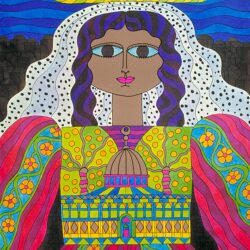The history of the MoMu building

Inspiration carved in stone: the MoMu building through the years

MoMu now

The architecture of the museum today dates back to early 2000s when famous Ghent architect, Marie-José Van Hee, gave the building a new dynamic, and also a new public area for the city, after a radical renovation.

This infrastructure was optimized in 2020, with great respect for the original signature of the predecessors, by B-Architects. Good to know: the spaciousness of the infamous MoMu entrance hall, the atrium and its massive sculptural wooden staircase was preserved. However, 800m² of extra public viewing space was added and includes a large multi-adaptable space and an exhibition space for the permanent collection that focuses on Belgian fashion. As a result, 3 different fashion stories can be exhibited at the same time in a total space of 2,000 m².

2002

On 21 September, one year after the Antwerp Fashion Year 2001, the then new MoMu opened. A large festival and gala pulled in an international crowd, and on MoMu's terrace there was a striking and regal retrospective show with work by Patrick Van Ommeslaeghe, a former student of the Academy. The Antwerp Fashion Department had already moved into the new building during the summer holidays so it could start the 2002-2003 academic year in brand new surroundings.
2001 – May 2001

On the morning of 17 May 2001, Antwerp awoke to the sight of a fluorescent yellow façade from ModeNatie. This was the highlight of the fashion event ‘MODE 2001 LANDED GELAND’, organised under the watchful creative eye of Belgian fashion icon Walter Van Beirendonck. In the following four months, coloured fields and flowerbeds appeared across the whole city to promote the event. B-architecten were tasked with perfectly integrating these bright spots into the urban landscape. In December, Copyright Bookshop became the first to open its doors in the new building.
1997 - 2000
At the end of 1997, the building was assigned by the City of Antwerp to the Flanders Fashion Institute. As a result, the concept of the FFI, to establish a new international fashion centre, finally took shape. From 1998, the building was regularly used to host events and exhibitions organised by the FFI, including Vitrine and Mode Voor Van Dyck (during Antwerp's Van Dyck Year, 1999).
In 1999, Ghent architect Marie-José Van Hee was asked to take on ModeNatie's renovation works. During the Vitrine event in 2000, large banners with designs by various Antwerp designers were hung up. In the same year, the ground floor of the building was used by students from the fashion department of the Royal Academy of Fine Arts (Koninklijke Academie voor Schone Kunsten) to present their graduate designs. The official starting pistol for the renovation of ModeNatie was sounded in August 2000.
1965 – 1990

In the mid-1960s, EBES (formerly ‘De Schelde’) sold the building to the City of Antwerp. The workplaces and offices of the Beschutte Werkplaats, a social institute set up by the City of Antwerp, moved to the building.
1919-1960

The men's fashion store ‘New England’ was completely taken over by the offices of an association for disabled veterans, and an exchange office. The gas and electricity company Compagnie de l’Eléctricité de l’Escaut (De Schelde) also rented offices. The building housed the company's administrative services and the showroom for electrical appliances. At the time, the residents of Antwerp named the building ‘Den Ellentrik’. In 1950, the offices of the radio distribution business IMEA moved to the building.
1908-1910

During this period, Compagnie Générale Coöpérative Charbonnière and 28 other businesses set up around and above the ‘New England’ fashion store. In 1910, the building was finally expanded. Due to a lack of guests, the rooms of ‘Hotel Central’ were converted in 1908 so that they could serve as offices for the Compagnie Générale Coöpérative Charbonnière, a business that traded coal, cement and briquettes.
1894 – 1908

The shop owner Pierre Einmahl moved his fashion business from the Meir to the new building on Nationalestraat. On the ground floor he opened a shop called ‘New England’, where he sold prêt-à-porter clothing for men and children. A certain A. Bardelli opened a luxury hotel, ‘Hotel Central’, in the building.
1893
Alphonse Van de Put bought a piece of land from Hubert Pierquin that had been freed up with the expansion of Boeksteeg. He wanted to make a big building complex to rent out. The plans were drawn up by the architect Ernest Dieltiens, who was also responsible for building St Norbertus Church in Antwerp. Dieltiens was not only an architect, but also gave lessons at Antwerp's Royal Academy for Fine Arts.
1876 – 1884

Op 31 October, the City of Antwerp commissioned Parisian builder Hubert Pierquin to start drastic demolition works in Boeksteeg. This resulted in a Parisian-inspired boulevard, approximately 15 metres wide and 700 m long, stretching from Ijzerenwaag to Groenplaats. This was how Nationalestraat was created. The aim of the street was to connect Groenplaats with a whole new neighbourhood in the south of the city, Het Zuid, a Parisian-style neighbourhood with wide streets and townhouses. In 1884, all that remained of the small Ijzerenwaag square was the statue of Belgian poet Theodoor Van Rijswijck.
19th Century
In the 19th century, Nationalestraat was still called Boeksteeg, and Drukkerijstraat was known as Voddenstraat. Boeksteeg, one of the longest streets in Antwerp, ran from the Ijzerenwaag to Kronenburgstraat, behind which was a network of lanes and alleys. There is still one tavern (in the current Nationalestraat) that bears the old street name, reminding us of a bygone era.










